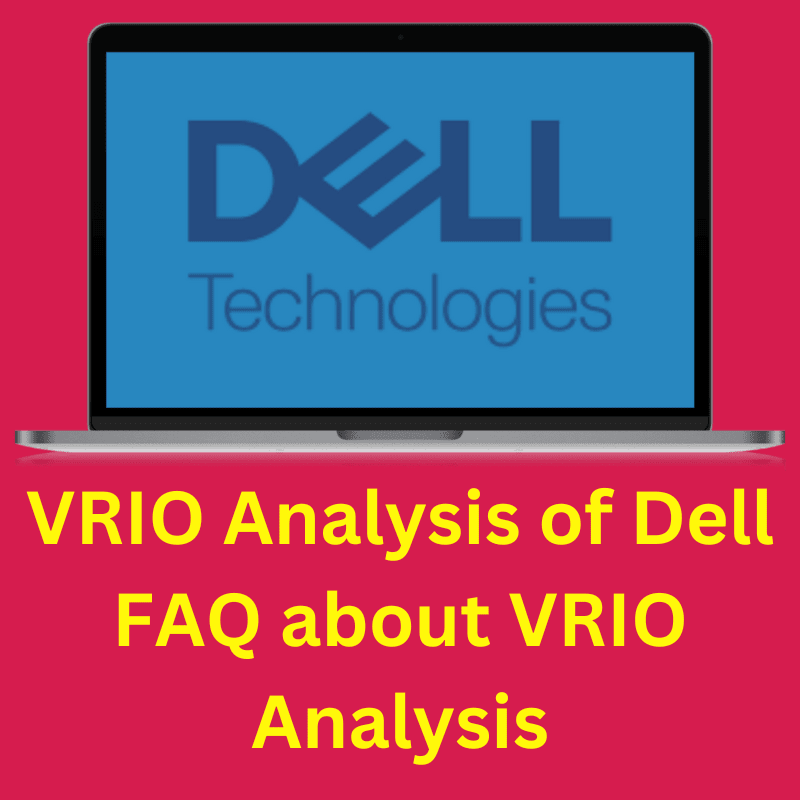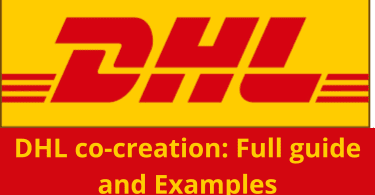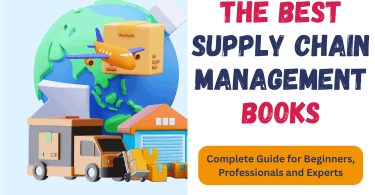VRIO Analysis Examples 2024
This section will present the best examples of VRIO analysis crafted by our blog team. First, let’s start with the VRIO analysis of the Dell company.
Dell Technologies VRIO Analysis Example
We present a free example of Dell VRIO analysis. Dell Technologies, Inc is an American company specializing in the construction of computers. Its headquarters are located in the state of Texas.
DELL is active in other markets besides the manufacturing and marketing of laptops, including the markets for data backup and storage systems, business servers, and software.
| Resources and competencies | Value | Rarity | Imitability | Organization | competitive advantage |
| Bulk and just-in-time purchasing | yes | yes | Temporary | ||
| Sales systems based on the Internet and telemarketing | yes | yes | Temporary | ||
| Continuous improvement of assembly lines, speed, and efficiency | yes | yes | yes | Defendable | |
| Customer-oriented culture | yes | yes | yes | yes | Sustainable and Distinctive competence |
FAQ about VRIO analysis
What is VRIO analysis?
What are the resources and skills that give your company a sustainable competitive advantage?
The VRIO analysis is the best internal strategic tool to answer this question. The VRIO model is one of companies’ most widely used internal strategic planning tools to identify the sources of your company’s competitive advantage.
American professor Jay Barney introduced this famous management model in 1995.
The main objective of the VRIO analysis is to analyze the “strategic capability” of your company. By strategic capabilities, we mean all the resources and competencies held by your organization. The term VRIO is an acronym of four: Value, Rareness, Imitability, and Organization.
What is the difference between a company’s resources and capabilities?
The resources of the company
Resources are defined as all the strategic assets of a company. They can be tangible or intangible. The professors of strategic management classify the resources of a company into four categories:
| Resources | Explication |
| Physical resources | includes all the tangible resources of a company, such as facilities, machinery, buildings, and equipment; |
| Financial resources | are the various sources of short- or long-term funding for a company. We can list shareholder contributions, bank credits, supplier credits, and subsidies received; |
| Human resources | consists of all the individual and professional skills a company holds. The value of human resources depends on their flexibility and adaptation to markets and company strategies; |
| Intangible resources | A company’s less visible and immaterial resources are referred to as intangible resources. Unfortunately, many businesses underrate the importance of these resources. Due to their intangible nature, analysis and evaluation present the most difficulty.
Intangible assets include, for instance, a company’s brand awareness, trademarks, customers, and the quality of its partnerships (banks, suppliers). |
A resource is considered strategic for the company when it creates value for the customers, rare and not easily imitable. In this case, the resource constitutes a source of competitive advantage.
The capabilities of the company
Corporate capabilities are the ability to mobilize, combine and allocate resources to achieve corporate objectives. Company capabilities depend primarily on the ability to develop internal organizational learning.
In other words, the company’s competencies or capabilities mean how it will use its resources. Strategic management authors often distinguish between core and essential competencies.
Core capabilities are distinctive competencies with a strategic nature, also referred to as critical capabilities.
How do you analyze your company’s strategic capabilities?
The VRIO framework allows you to determine whether your company’s capabilities and resources (tangible and intangible assets) are distinctive.
A resource or capability is considered distinctive when it provides a sustainable competitive advantage to your company.
To ensure that a resource or capability provides a sustainable competitive advantage to your company, it must respect four conditions: value, rarity, imitability, and organization.
How to conduct a VRIO analysis?
VRIO is the acronym for the four questions to ask about resources and capabilities to determine their competitive potential: the value question, the scarcity question, the imitability question, and the organization question.
The table below explains in detail the implementation of the VRIO method via the following four questions:
| V | Value | Can your company’s resources and capabilities successfully take advantage of market opportunities or counteract market threats? In other words, do these resources and capabilities create value for customers? If the answer is yes, then they are creating value. These resources and capabilities do not create value if the answer is no. |
| R | Rarity | How many competitors already have the resources and capabilities that generate value? If the answer is very few, they are the source of competitive advantage (V+R). |
| I | Imitability | Do firms that do not have these resources and capabilities suffer a cost disadvantage in trying to obtain or develop them? If the answer is yes, possessing these value-generating and rare resources and competencies (V+R+I) is a sustainable and defensible competitive advantage. If the answer is no, then the value-creating and rare(V+R) resources and capabilities provide only a temporary competitive advantage. |
| O | organization | Is your company well organized to take full advantage of the competitive potential of resources and capabilities? If the answer is yes, the value-creating, rare, and not easily imitated resources and capabilities (V+R+I+O) provide your company with distinctive, sustainable capabilities. |
What are the threshold capabilities of a company?
Resources and capabilities that do not meet these four conditions are not distinctive. Professor Barney uses the term “threshold capabilities” to refer to the competencies and resources needed to enter a market, but mastering them provides no particular competitive advantage.
A threshold capability does not provide a strategic advantage. A company without a sustainable competitive advantage will always be vulnerable to aggressive competitive actions.
Example of threshold capability:
For a distributor of deli products, cold chain management is a core competency to operate in the market. But this competence does not provide any particular competitive advantage for this company.
What are the advantages of the VRIO analysis?
VRIO analysis has several advantages for businesses and managers:
- Simple and effective tool to evaluate your company’s resources and deli products;
- The VRIO analysis allows you to identify the sources of your company’s competitive advantage;
- The VRIO framework helps managers make strategic decisions about the organization’s resources and activities.
What are the disadvantages of the VRIO analysis?
The first criticism of the VRIO model is that the analysis is static. Your current resources and strategic deli products will not necessarily be the same in the future.
Most markets change rapidly; new competitors emerge, and your current competitors deploy new efforts, technological developments, changes in customer needs, and changes in your organization’s macro-environment.
For these reasons, you should regularly update the VRIO analysis of your business.
The second criticism of the VRIO model is the strongly contested inimitability criterion. Managers are asking serious questions about the type of resources and deli products that are difficult to imitate.
Faced with this criticism, Professor Jay Barney proposed three criteria to qualify a resource or capability as inimitable:
- It must be complex, meaning that it is complicated for a competitor to reproduce it at home;
- It requires implicit knowledge, which means having tacit knowledge and skills;
- The resource or capability is the result of the company’s culture or history, such as the awareness, the excellent reputation, or the customer culture of your company.
How to do a VRIO analysis?
To apply the VRIO framework to your company, strategic planning authors suggest the following approach:
Step 1: Identify and map all the capabilities and resources in your organization;
Step 2: Analyze the resources and capabilities identified to distinguish four categories:
- Resources and capabilities that do not provide a sustainable competitive advantage (threshold capabilities);
- Resources and capabilities that provide a sustainable competitive advantage (distinctive competencies),
- Resources and capabilities that provide a temporary competitive advantage;
- Resources and capabilities that provide a defensible competitive advantage.
Step 3: Make the right strategic decisions regarding each category of resources and capabilities:
- Consider outsourcing threshold capabilities to external providers offering lower costs than your company to improve your organization’s profitability;
- Improve strategic competencies and resources that your organization is not leveraging to increase its competitive advantage;
- Seek out new business segments where our current capabilities and resources would provide a sustainable competitive advantage.
Conclusion
To complete your company’s internal strategic analysis, we recommend using the value chain model introduced by American professor Michael Porter in 1985.
This famous tool allows you to analyze the activities of your organization deeply. Also, to summarize the results of your strategic analysis, you can put them together in the SWOT matrix to make the right strategic decisions.












Leave a Comment